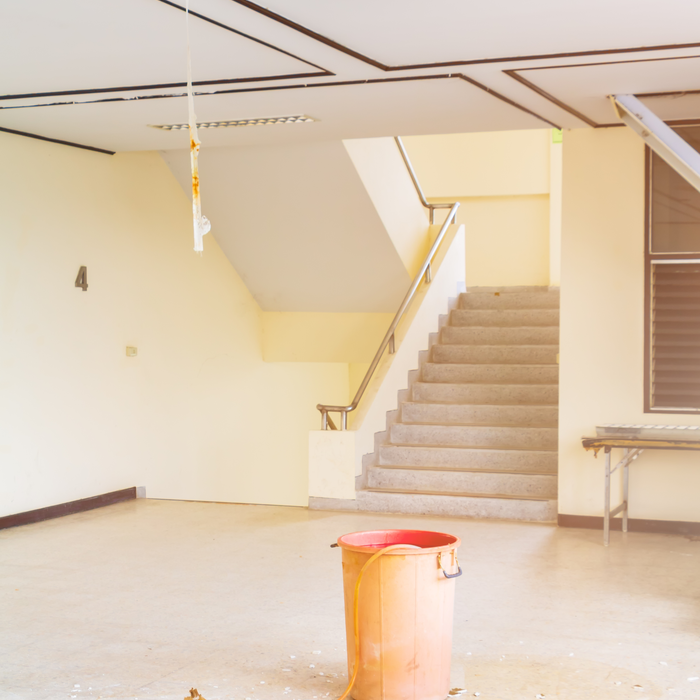If you’re wondering how to repair a leaking roof from the inside, you’ve come to the right place. Roof leakage can be a frustrating and annoying problem. Although we recommend using professional services if the leak is extensive, if you want to take on the task yourself, this article is for you.
In case of heavy rains, as a temporary solution to roof leakage, you can repair a leaking roof from the inside, and deal with the external fix later on.
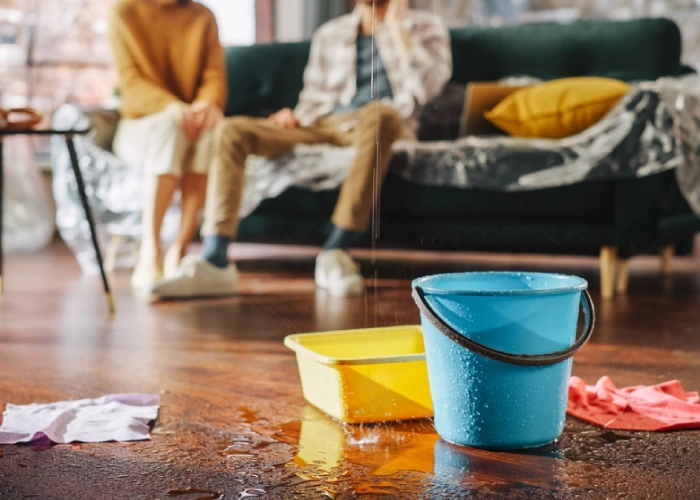
Your roof may need repairing if you identify the following:
- Broken, rotten, or damaged shingles
- Gutters/downspouts with slow draining
- Clogged gutters
- Broken chimneys or vents
- Dark spots around your pipes
- Spots through which outside light passes
- Sagging or wilting pipes and drains
What Will You Need?
Here are the items you’ll need to fix a leaking roof from the inside. If you don’t already have them, they’re easy to find at your local hardware store:
- Caulking
- Scraper
- Flashlight
- Utility knife
- Rubber gloves
- Nails
- Bucket
- Roof patch (Roofing tar)
Most of these tools are common in DIY households, but if you’re new to it, grab them in advance.
1. Find the Access
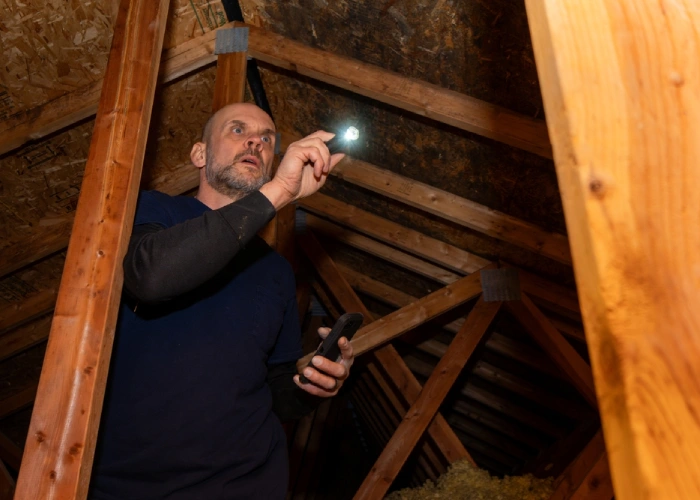
Go to your attic to access the leaky part of the roof. Remove insulation and cut into the drywall to access and drain standing water. Use sponges and buckets to soak up and contain the water.
Place a piece of plywood in the ceiling to stabilise your bucket and tools. Avoid placing anything on a moist or weak surface.
2. Tracing the Leak
Next, find the source of the leak. This is crucial to stop the water at its origin.
Trace the path of the dripping water back through the attic. Use a flashlight for visibility. Be aware that water might travel some distance from the actual leak, so investigate thoroughly. Waiting for a rainy day can help you spot the leak more clearly.
To divert the water, insert a nail where the leak drips to concentrate the flow, making collection easier. Place a bucket beneath it to catch the water.
3. Temporary Leak Patch
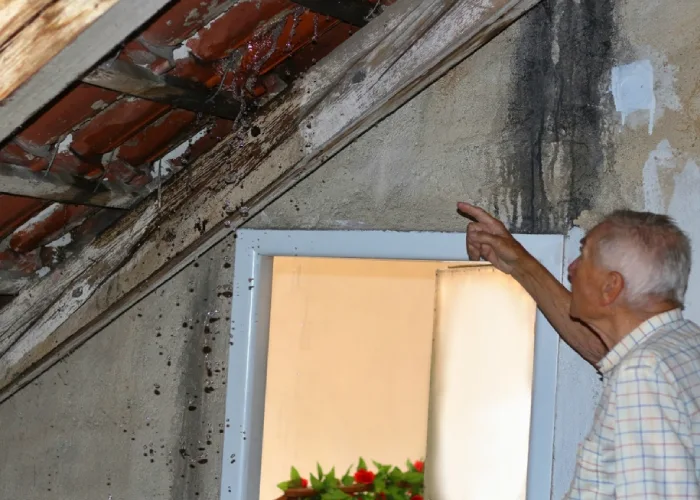
Now it’s time to repair the roof leak from the inside using a roof patch.
Mark the affected area with chalk. Use a scraper to apply roofing tar directly onto the hole and the surrounding area. Place a piece of plywood or a spare shingle over the tar, then add more tar around the edges to seal the patch.
Finish by applying caulking around the patch using a scraper to spread it evenly.
4. Highlight the Problem Area
Use a measuring tape to record the size and location of the patch. This helps you locate it later from the outside. Once the weather clears, put on rubber-soled shoes and go up to the roof. Use your measurements to find the spot and apply more tar or sealant externally to complete the roof repair.
5. If You Can’t Access the Leak
If you don’t have attic access or can’t find the origin of the leak, use a plastic roof covering as a temporary measure. Here’s how:
6. The Plastic Covering
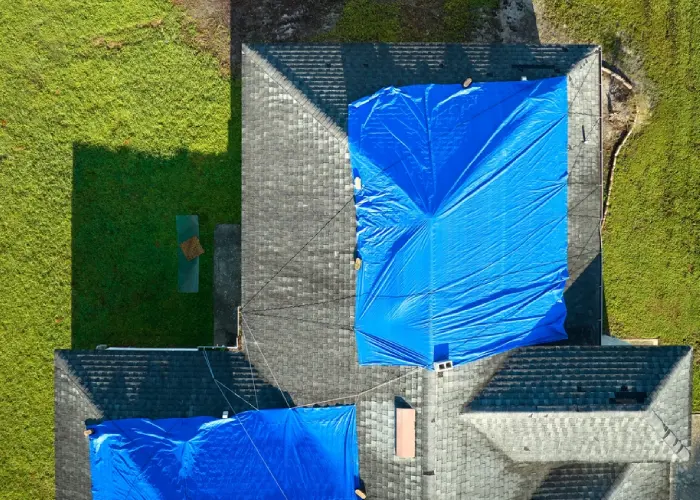
Start by purchasing roofing plastic—polyethylene rolls, typically 4 feet wide, are ideal.
Also, get 8-foot 2×4 wooden boards to help secure the plastic in place.
Cutting the Plastic
Unroll the plastic and cut it lengthwise to reach from the ridge to the eave of your roof. Ensure the section is wide enough to cover the leaking area completely.
Attaching the 2x4s
Use a staple gun to attach the plastic sheeting to one 2×4 board. Sandwich the plastic between two 2×4s and nail them together. Repeat for the opposite end.
Covering the Roof
Use a ladder to reach your roof. Position the first pair of 2×4s over the ridge and stretch the plastic downwards over the roof surface. Always wear rubber-soled shoes and take caution—especially in wet conditions. If the situation is dangerous, call for emergency roofing help.
Knowing how to repair a leaking roof from the inside can save you time and money during emergencies. Understanding how to repair a leaking roof from the inside can help you manage urgent situations until professional help arrives. However, these fixes are temporary solutions only. Always schedule a follow-up with a professional roofer to ensure the problem is fully resolved.
House maintenance is crucial for safety and comfort. Regular checks on your roof, plumbing, and even carpets can help avoid serious issues later.
If you’re dealing with stains and dampness from a leak, services like carpet cleaning offer great packages to restore your interiors. Watch for further signs of water damage, and don’t ignore what may seem like small issues—they can escalate quickly.
TIP: Tackling Roofing Troubles: How to Address the Most Common Roof Problems

